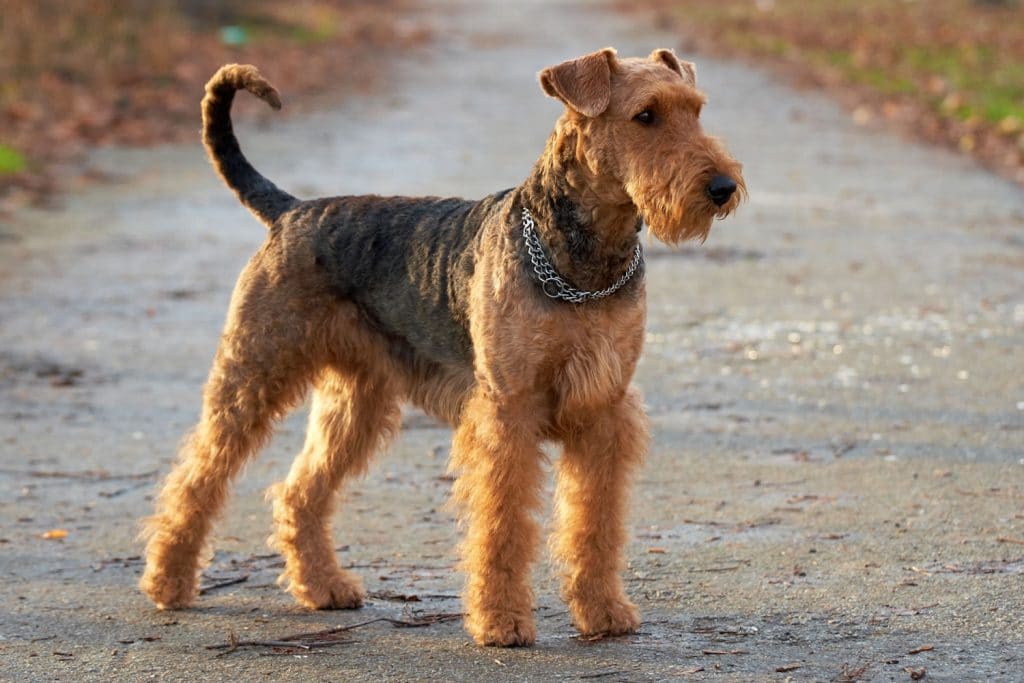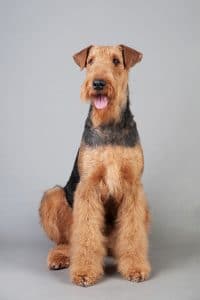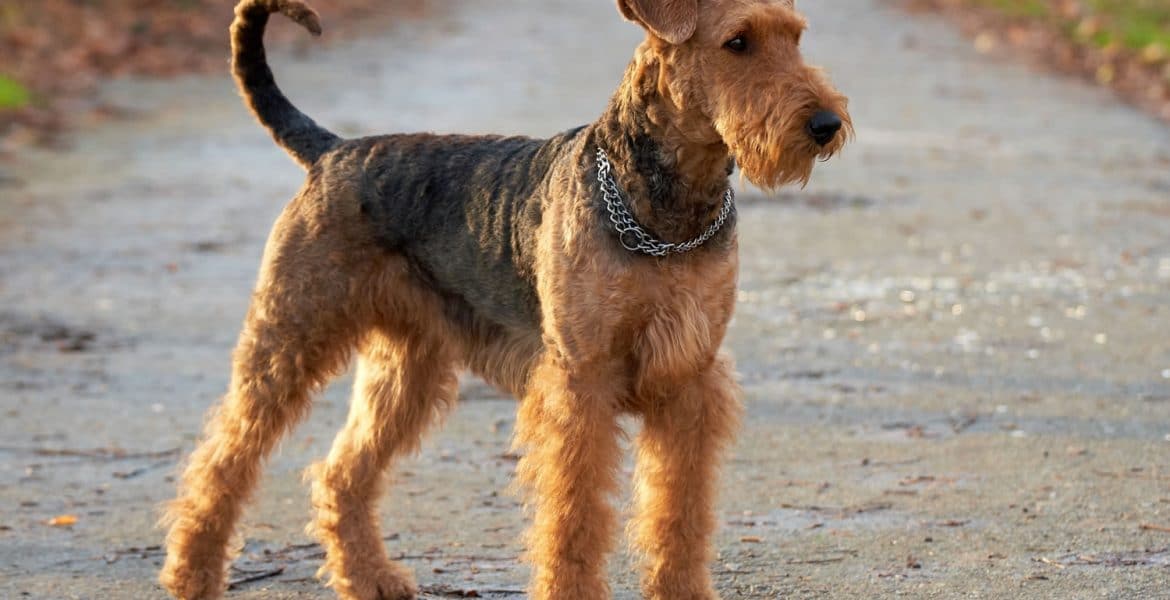The Airedale Terrier is named after a valley in West Riding of Yorkshire. The river Aire runs through the valley and on its shores lived the people who first bred this dog. The offspring of Welsh Terriers and Otterhounds, the Airedale was bred with hunting in mind.

During the 19th century it was not unusual for hunters to go out with large packs of dogs. These packs would be a mixture of hounds and terriers. The hounds used their superior noses to sniff out game, while the terriers would do the dirty work of sneaking into animal dens to make the kill. Terriers were also used in ratting. Rats would be chased out of their holes by ferrets, making it possible for terriers to run them down and kill them for the amusement of spectators. Airedale Terriers proved to be particularly good at this task, as they were keen on water and would follow rats anywhere.
It soon became clear that Airdales were good for more than ratting – their large size made them suitable for hunting larger game as well. As time went on, they proved their talents went outside the realm of hunting. They worked as guard and police dogs during World War II, and today they’re used for tracking, rodent control, and competitive obedience.

The Airedale is the largest breed of terrier. They weigh in between 25 and 30 kg on average and usually reach at least 58cm. Their heads are long and flat, with black noses and small, dark eyes. Their ears are shaped like the letter V and fold to the side of the head. An Airedale’s tail is long, fluffy, and has a slight curl on the end. In the US the tail is usually docked.
An Airedale’s coat has two layers. The bottom layer is soft, while the outer layer is dense and wiry. These coats are usually tan and black or tan and grizzle, with easy to spot markings. They often have a bit of a beard, which should be washed daily to make sure no food gets caught up inside it. An occasional hand stripping will keep shedding to a minimum.
Airedales are intelligent and loyal, but they do have a rowdy streak that requires a bit of care in training. They can sometimes be willful or disobedient, especially around family members that they view as being submissive. Therefore, it is important for everyone in the family to assume an alpha-dog mentality around this pup, even (and especially) children.
Although Airedales are not used as much for hunting these days, some of their predatory instinct has remained intact. They’ll take any chance they can get to stalk and hunt small prey, whether it be squirrel, chipmunk, or pet hamster. They can be taught to treat smaller animals with more respect if trained to do so from a young age.
Airedales are generally healthy dogs, but they are prone to hip dysplasia and skin conditions. These dogs have an average life expectancy of 10 to 12 years.
The thing to remember about Airedales is that they do not like to slow down. They’re very active dogs, filled with energy and that energy needs an outlet. Ideally this outlet would be a daily walk or a romp in the park. A less than ideal outlet would involve your home becoming much less tidy than what you would prefer. As this breed ages it tends to become a little mellower, but an appropriate amount of exercise should still be a priority.
As a whole Airedales will get along with other family pets. The one area where this might not be the case is other dogs. Sometimes Airedales will try to dominate a fellow canine, which can lead to trouble. However, if you are able to maintain alpha-dog status with your Terrier, he should be a bit less domineering with other dogs.


